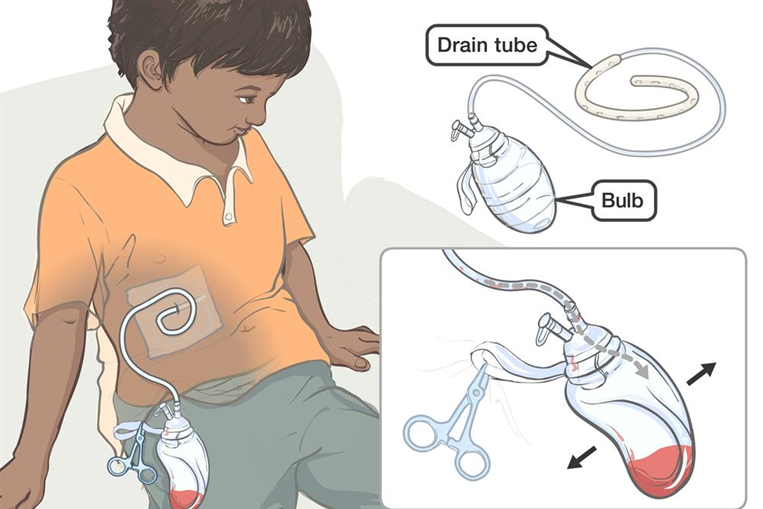A nurse is caring for a client who is postoperative and has a Jackson-Pratt drain in place. Which of the following actions should the nurse take?
Maintain the client on bed rest.
Decrease the client's fluid intake.
Apply cold compresses to the site.
Place the right leg in a dependent position.
The Correct Answer is D
Choice A reason: Maintaining the client on bed rest is not an appropriate action, as it can increase the risk of thromboembolism, infection, or atelectasis after surgery. The nurse should encourage early ambulation and exercise as tolerated by the client.
Choice B reason: Decreasing the client's fluid intake is not an appropriate action, as it can cause dehydration, constipation, or impaired wound healing after surgery. The nurse should encourage adequate hydration and nutrition to promote recovery and drainage.
Choice C reason: Applying cold compresses to the site is not an appropriate action, as it can cause vasoconstriction, inflammation, or pain at the site. The nurse should apply warm compresses to the site to facilitate drainage and reduce swelling.
Choice D reason: Placing the right leg in a dependent position is an appropriate action, as it can promote gravity-assisted drainage from the site and prevent fluid accumulation or infection. The nurse should place the drain below the level of the wound and secure it to prevent dislodgment or tension.

Nursing Test Bank
Naxlex Comprehensive Predictor Exams
Related Questions
Correct Answer is A
Explanation
Choice A reason: Asking the client if they are having difficulty breathing is the highest priority question, as it can assess the severity of their allergic reaction to penicillin and the risk of anaphylaxis, which is a life-threatening condition that can cause airway obstruction and respiratory failure.
Choice B reason: Taking the client's heart rate is not a question, but an action that can be done after asking the client about their breathing status. The heart rate can indicate the presence of tachycardia or arrhythmia, which are signs of cardiovascular compromise due to an allergic reaction.
Choice C reason: Telling the client that they need to receive diphenhydramine is not a question, but an action that can be done after asking the client about their breathing status. Diphenhydramine is an antihistamine drug that can reduce the symptoms of an allergic reaction, such as itching, swelling, or wheezing.
Choice D reason: Asking the client if they have any allergies to medications is not a high priority question, as it can be done before administering penicillin or after stabilizing the client's condition. Knowing the client's allergy history can help prevent future adverse reactions and guide appropriate treatment choices.Question 42
Correct Answer is D
Explanation
Choice A reason: Filling the pad with sterile water is not necessary, as tap water can be used for an aquathermia pad without increasing the risk of infection or contamination.
Choice B reason: Using safety pins to secure the pad in place is not appropriate, as they can puncture or damage the pad and cause leakage or electric shock.
Choice C reason: Applying the pad for 45 min at a time is not recommended, as it can cause skin burns or tissue damage due to prolonged exposure to heat. The nurse should apply the pad for no more than 20 min at a time and check the skin frequently for signs of redness or blistering.
Choice D reason: Covering the pad prior to use is an important action, as it can prevent direct contact between the pad and the skin and reduce the risk of burns or irritation. The nurse should use a towel or a cloth to cover the pad before applying it to the affected area.
Whether you are a student looking to ace your exams or a practicing nurse seeking to enhance your expertise , our nursing education contents will empower you with the confidence and competence to make a difference in the lives of patients and become a respected leader in the healthcare field.
Visit Naxlex, invest in your future and unlock endless possibilities with our unparalleled nursing education contents today
Report Wrong Answer on the Current Question
Do you disagree with the answer? If yes, what is your expected answer? Explain.
Kindly be descriptive with the issue you are facing.
